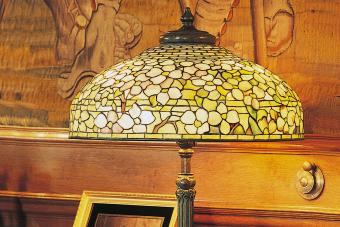
Antique glass insulators are a low cost but very popular collectible. They are easy to find, come in a variety of colors, and make a colorful display.
History of Glass Insulators
The first insulators had nothing to do with telegraph wires or electrical wiring. They were the glass insulators that were used to protect homes against lightening strikes.
Glass insulators for wiring began to be manufactured in the mid 1800s in response to the technology of the time. Samuel Morse had created the first working telegraph in 1844 and by 1850 telegraph lines were being strung from one coast of America to the other.
As technology advanced the glass insulator was used for telephone wires and electrical wires. The first insulators of this type were small because they only needed space for one wire. As time went on the insulators became larger and reflected the growth of the telephone and electricity.
Rural Electrification Act
In 1936 President Roosevelt and Congress passed the Rural Electrification Act which provided funding for electricity and telephone wiring to be run to farms and homes in outlying areas. This increased the need for the glass insulator and more companies sprang up in response to the need.
From 1920 to 1950 there was a peak in the manufacture of glass insulators. Most of the insulators available today come from this era. In the 1950s electrical companies transitioned to porcelain insulators. This transition was complete by the 1970s.
Modern telecommunications use cable which does not need insulators and porcelain is used for electrical wires because it is less expensive to manufacture.
Insulator Manufacturing Companies
There were hundreds of companies that manufactured the old insulators. In fact, glass companies like Indiana Glass and others manufactured insulators right along with their Depression glass stemware and canning jars.
Some of the companies that are associated with antique glass insulators are:
- Hemingray
- Indiana Glass
- Kerr Glass Manufacturing
- Louisville Glass Works
- McKee and Company
- National Insulator Company
- Owens-Illinois Glass
- Pacific Glass Works
- Star Glass Works
- Whitall Tatum Company
Colors of Antique Glass Insulators
Each company had a slightly different design or color. The most common colors of insulators were clear and aqua. There were other colors however and these can be quite rare and valuable. Some of the colors were:
- Amber
- Cobalt blue
- Green
- Two tone
- Yellow green
- Olive
- Light blue
Old Insulators Made from a Variety of Glass Sources
Since the manufacturing companies did not solely make insulators they often used leftover glass from other projects to press a few insulators. Because of this you may see occasionally see an insulator in opalescent glass, Vaseline glass, or other unusual color (or even mixture of colors). These are very collectible because of their rarity. Other manufacturers recycled old bottles and other glass items which resulted in swirls of color, bubbles, and other interesting effects in the insulator.According to a Collector's Weekly interview with insulator collector Ian Macky, cobalt blue is the most popular color among collectors.
Beware Color Manipulated Insulators
Keep in mind that unethical sellers can alter the color of an insulator by applying heat or radiation. They then claim that it is a rare antique and charge much more. It is difficult for even experienced collectors to discern the differences in natural and color manipulated glass insulators; so, be on guard against anything that doesn't seem right. If you are considering the purchase of an expensive insulator it may be a good idea to have an experienced collector take a look and give an opinion on its value.
Glass Insulator Value
Old glass insulators can range in value from $2 up to over $400. Like other antiques, glass insulators are evaluated on several criteria:
- Age
- Rarity
- Condition
- Demand
- Manufacturer
A good way to determine value is to spend a few days checking eBay. Glass insulators are available in all shapes, sizes, and price ranges on this site and you will get an idea of what collectors are willing to pay for them.
Other Vintage Glass Insulator Sites
If you would like more information about glass insulators, the following Internet sites provide helpful information:
Collecting and displaying antique glass insulators can be a low cost, enjoyable hobby. These colorful bits of history can create a cheerful bolt of color in any nook of your home. Learn as much as you can about your hobby to ensure that you get the best deals.







